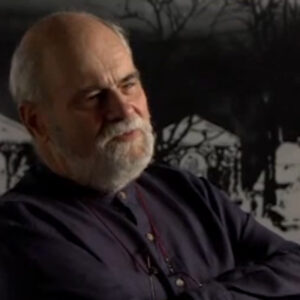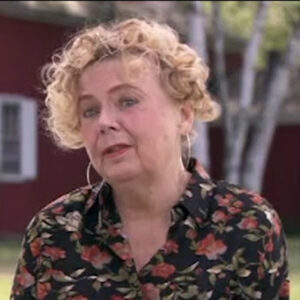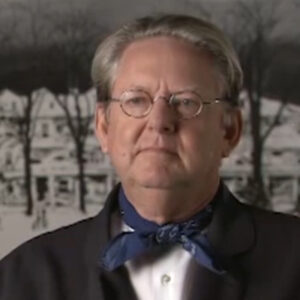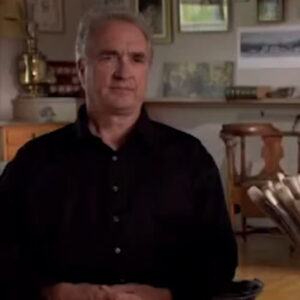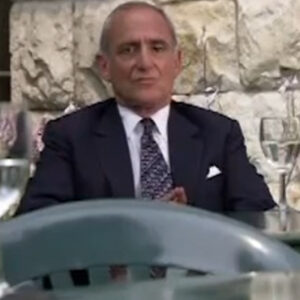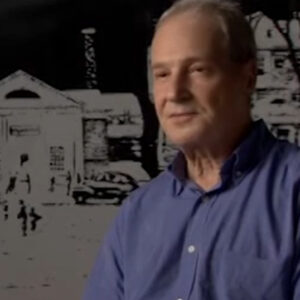Speaker Screaming So tell me about your very first memories of Rockwell. No. Growing up in America?
Speaker Well, I actually probably just saw the post covers, you know. They were sort of omni present. Right. It’s not like you ever really looked at Rust Rock. Well, he was just around. It was a look rather than almost like an individual in a funny kind of way. It wasn’t till later that I really thought about, you know, the style of his style, of his work. And I’m not sure I ever really thought about it all that much. I think there are. I think there are some things that he does really, really well. I think he has. He’s a really keen observer of human experience and has a really good sense of what people in different periods of their lives at different ages, what what what those people feel and what they’re interested in and where that comes into conflict with people of other other ages and stuff like that.
Speaker And I think he’s.
Speaker Kind of a different question. Well, I mean, tell me honestly what people in your world on the contemporary art world think about why you said, you know.
Speaker What do you think of Norman Rockwell? What would people do? Wow. And then what?
Speaker Well, I think they think he’s fairly sentimental by, you know, 1990s post-modern sort of standards. I think they I think they think of him as a sort of as an illustrator who had a kind of, you know, of historical significance, you know, kind of represents like the first half of the 20th century. My father was actually born in 1986. My father was two generations older than I was. And I think he was actually just about 10 years younger than Norman Rockwell. And I see in Rockwell a kind of similarity to my father’s point of view and experience. My father grew up in a small town in Utah in Ogden, and his grandfather was a country doctor. And my father used to talk about how you son ride around in a horse and buggy and the buffalo robes with his grandfather while he made house calls and stuff like that. And that’s kind of Norman Rockwell’s America in a funny kind of way.
Speaker I think that that sort of small town turn of the century sort of experience became like the iconic American experience in a funny kind of way. And I think if you look at a lot of the people that we look at as cultural icons, people like everybody from Ronald Reagan and Walt Disney to John Ford and John Wayne and Frank Capra, you find those kind of images and and sort of ideas of that kind of shared experience of common people who had common values of hard work and integrity and kindness and generosity, and also had a real lack of ambiguity, lack of doubt, lack of postmodern doubt about things they felt kind of. What do you call a deliberate sort of idealism and innocence and whatever. They kind of shared that sense of possibility that we don’t really in our era, we don’t really have that. I think that’s sort of the we probably have a more a greater consciousness of the good and the bad, you know. I mean, we have probably have we were we grew up on the ideas of, you know, the good part. And then we got sort of self doubt about, you know, sexism and racism and cultural imperialism and all that kind of stuff. And you can’t you can’t really it’s hard to go back to Norman Rockwell to that.
Speaker Well, I mean, the painting behind you is, I suppose, a good example of mean, if there were anything if there’s anything that isn’t a Norman Rockwell’s work like that. I mean, you kind of like turning the Rockwell iconic image on its.
Speaker Well, maybe it maybe a little bit. I think that I think that there’s a few sort of similarities with this with this piece.
Speaker Ring of Fire and Norman Rockwell. I think that the idea for the piece came out of a real funny historical moment. I read somewhere this is sort of like Pulp Fiction from the nineteen forties. I read in this G.I. book about how the G.I. is in the South Pacific during World War Two, didn’t have anything to do except play basketball. And one of the quotes from this book was a hellhole, if ever there was one. And that image sort of suggested that the basketball hoop and the and the flames, which is really it’s really just an image. But then it took on a new kind of historical significance in the nineteen nineties with the, you know, the Rodney King sort of insurrection in Los Angeles. And it became a different kind of iconic sort of sort of image. It has one thing funny in common with Norman Rockwell is that after that period of time, it was on a magazine cover. And and I think that’s one of the most modern things about Norman Rockwell, is that he did all those magazine covers.
Speaker And he it’s like the medium is the message.
Speaker I mean, he he advertised his view of American culture in the way only a popular. They’re really enormously broad, sort of, you know, soapbox platform or whatever can.
Speaker I mean, he he put his cultural values into a really beautiful little weakly dramatized narrative that hung on every newsstand and went into people’s homes.
Speaker And that’s probably the thing that makes him the most modern, is that he had such a he had such access.
Speaker His paintings didn’t hang in museums and wait for people to come there and look at them. They went out and sought people out in the same way that images on television do. And that’s probably the most modern thing about.
Speaker And he told those stories in a way about ourselves.
Speaker I mean, as he did and he actually packed quite he packed quite a wallop into the individual images, I think. I mean, some of them are. I actually don’t really care all that super much for the ones that are funny. Those are the ones to me that seem almost the most cute, the most sort of dated. But some of the ones that are really touching, I think are still touching. The two that I think are my favorites are actually he made after after Franklin Roosevelt’s speech about the four freedoms and which were to offer more positive freedoms.
Speaker Which one was freedom of speech then and down and freedom of religion.
Speaker And the other two were interesting because they aren’t like Bill of Rights freedoms, which they were freedom from want and freedom from fear and freedom from fear. One is really beautiful. It’s like two small children tucked in a bed with their parents who are a little bit older than most parents were in the forties, sort of standing over them and looking down. And the husband, who’s sort of the closest to the viewer, has a little bit of like gray hair and sideburns and stuff. And in his hand, he’s holding both his reading glasses and a folded newspaper. And you can’t completely read the headline, but you can read the fragment that suggests like bombs and killed. And, you know, I mean, there’s like really a sense of menace that’s out there somewhere else.
Speaker And it’s really a nice it’s really a nice painting. And the other one that I really actually liked the most, which I think really holds up and is really beautifully painted. I wish I could remember the name of it, something like breaking breaking ties or something like that as a is an old model, a farm truck that’s really beat up. And it has an old sort of weathered farmer and his young sort of son and the dog sort of all sitting on the running board.
Speaker And everybody looks sad except for the young kid who’s obviously going away to college, who looks really sort of like excited and expectant about the bus coming and down. It’s just really if you look at every detail and you look at their expressions and all that kind of stuff, there’s this real incredible poignancy of those two things of the of the generations going in two really different directions, like the young kid having everything ahead of women and the father, you know, kind of seeing it receding. And there’s sort of the sense and the dog and everything, it’s really nice and it really holds up and it’s really good painting. So it doesn’t really magazine matter that it was on a magazine cover.
Speaker So even though it’s evoking an emotion, I might be accused of being sentimental.
Speaker Well, it’s not a pretty complex set of ideas to pack into a visual image. And when you start looking at the truck and the clothes and the way that people’s skin looks and all the emotions and all that kind of stuff, you have to be really you have to be really good at it to do something like that. And you have to think of whether if Norman Rockwell looks dated or it doesn’t.
Speaker I think you have to respect that. He had an extraordinary talent and gift for boiling it down to something that was really brief and, you know, May. He made it with his hand and he thought it up. And a lot of times he he actually had the neighbors posed for photographs and he refined the images and stuff like that. And I think you have to respect the craft of that, because that’s really hard to do and it’s particularly hard to do like week in and week out.
Speaker I mean, you have to be really. Productive to do that kind of stuff again.
Speaker I mean, is there any relationship in terms of your work? Other I guess, would you say conceptual artist in the sense that you want the viewer to read, but you’re also telling a story about ordinary daily life?
Speaker Well, I think that the I think that the idea of a narrative image is, you know, or a sophisticated narrative images is probably come and other to, you know, current art. But I think that I actually think that Norman Rockwell and funny kind of way has more in common with popular art forms like film than he does with more sort of fine art forms like painting and sculpture.
Speaker The cause of the sort of, you know, the the the wide appeal and the he’s not really portraying the kind of really personal aesthetic that a lot of fine artists do. He’s actually I think he’s he’s building consensus in the way that people do when they advertise. And I’m not saying he’s doing it for for money, but I think he’s doing it based on his beliefs and his, you know, vision of how it’s supposed to be. But I think that that’s a different a different thing than doing some kind of personal research or something, which is the way I think about most sort of fine art.
Speaker So sort of a vision of the country, of America, but not an interior.
Speaker I don’t think it is an interior vision at all. I think it’s a I think it’s a sort of.
Speaker I think that Norman Rockwell was actively involved in building consensus about what the key cultural values of American life are or were, I mean, depending on how you look at it. And I think that there aren’t very many people that you can point to whose work does that with as much as his. I don’t think I think that. I think John Ford did it, but he did it incidental to this kind of sweeping landscape and vision and that kind of.
Speaker And I don’t I think that Norman Rockwell is doing it in a more acute way and he’s reaching a broader audience and he’s using the tools that dramatists use. I mean, he’s putting a he’s putting a human recognizable face on the events that he thinks are important.
Speaker Like, for example, let’s say one of the pictures of his, I think is really incredibly successful because it takes a really difficult political issue in the time when it was and it totally it totally new, neutralizes it and makes it something really understandable and sort of, you know, heartfelt and shared, which is the picture of the the the black kids arriving with the moving van into the into the white neighborhoods.
Speaker And it’s really beautifully dramatized by the fact that the little each of the two kids, the two young boys of the same age, one black and one white, each has a baseball glove. Right. And they obviously have a compelling interest that’s going to transcend any other differences that they have. Right. And it’s just a it’s a picture. But it you know, it’s really like packs of powerful statement. And I mean, it might be, too, if I say that it’s propaganda, then it sounds really like, you know, like, you know, the evil empire.
Speaker But in terms of what it’s doing right, it’s taking it’s taking something very sticky and it’s making it about the person that lives next door to you.
Speaker Basically, you know, I mean, it’s about it’s causing people to think the right to understand what the right thing is. Right. And that I mean, that’s not fine art in the traditional sense. I mean, that’s that’s building cultural consensus.
Speaker So, I mean, it’s not his personal aesthetic that’s like that’s something that is more involved with with trying to change history.
Speaker From a crafts point of view, can you see a personal aesthetic of the work? Yeah, he has a he has a very, very distinctive style. All right.
Speaker In terms of the way draws and images are very recognizable. I mean, you can see. You can tell immediately that it’s a that it’s a Norman Rockwell. And the earlier images from from like about 1915 in 1920 are actually more painterly than the later images. And the later images get more and more detailed and more colorful. And as they get, you know, towards the 50s and then I think as they get many starts doing more and more portraits and stuff and more presidents and more statesmen and stuff like that as it gets to the end of his career.
Speaker And I don’t really know what they mean by by more painterly. What do you mean? Well, I think that the the early work is more it’s more.
Speaker What shall we say? It’s more abstract. It’s less colorful. It has more it’s more painterly. It has more visible brush strokes. And there are areas that are sort of left to the imagination or just sort of feathers off. And the later work gets to be more crisp. It gets to look more like illustration and less like fine.
Speaker But I think that there’s more complex ideas in terms of, like, little miniature dramas in a lot of the later work. And more craven and.
Speaker And just it’s just me. It’s like people become more refined in terms of what they think is important, say, as they work for their through their career.
Speaker There does seem to be a kind of a more readiness ness from the art world to look at Rockwell now. There was certainly 20 years ago, so.
Speaker Well, I think he’s more he’s less threatening now because he’s history.
Speaker I think that I think that when the fine art world was doing abstract expressionism and Norman Rockwell was doing a small town turn of the century America. I think that there was really a broad sort of Sikhism. And I think that there’s still a broad schism.
Speaker But it’s easier to go back now and see the things that he did that he really did well.
Speaker I think I think there’s more respect for the media now and the fact that he did it all on magazine covers and and because he attacked things like history and. I think I think he’s more interesting than he just than he just did.
Speaker You know, all things about the people in his neighborhood or something like that. I mean, one of the pieces that I kind of like is one where he where you get a sense that history just is sort of real common thing of one thing, some planning. Another thing, which is the colonial sign painter who’s painting the painting that says, you know, like George Washington Tavern is a little like, you know, Eagle on the top of it. And over in the background, you can see that it used to be the it used to be the King George in the third tavan and had a little crown on the top. And the sides are basically identical in size, except for that, you know, except because the new is supplanting the old. And and that’s just kind of a timeless observation.
Speaker And so I think there’s a certain amount of real intelligence in his work that maybe people can see now because they aren’t threatened by the sort of sentimentality of it.
Speaker I mean, I’ve talked to a number of products and there’s sort of two completely diverse opinions. And one school says there’s Apsley Rockwell has no legacy whatsoever. And contemporary art people like yourself and others say, yes, you did that. If Rockwell hadn’t set up this iconic image of America, you know, somebody said domestic sublime, but people like yourself couldn’t, like, be portraying the flip side of that now.
Speaker And I wonder well, let’s just say that I think that there was some kind of clarity that people had in the first half of this century. And I think that it’s not just Rockwell. I mean, I think that you can see it in film and you can see it and, you know, Will Rogers, you see it and Ronald Reagan, I mean, you can see it and all these people. And my father had it, too. So I assume that everybody had and it wasn’t just the popular artists to have it. I think that people had a really clear sense of what it was to be American and that that was a good thing. And it was some kind of that we had some kind of, you know, possibilities or values or something that made us special.
Speaker And I think that it’s hard to re embrace that point of view from where we are now. But I think the clarity of it at the very least is attractive from the kind of disillusioned, you know, 90s.
Speaker And I also think that when in our age, when the media is so dominated by by violence and stuff like that, it’s kind of it starts to be refreshing to look back to something that’s that’s dominated by more kind of human sensibility.
Speaker I mean, I’m sure it’s stretching a point, but if a viewer, you know, absorbs this piece behind us, I mean, in any sense, subconsciously, do you think contemporary viewers has that other image of the golden age and sort of innocent vision of America?
Speaker Well, curiously enough, this image actually came out of the time of the innocence part of America, because I guess that the image was really brought about by World War. You know, there’s an anecdote of World War two. But in some of my other work where I actually use found collage materials and stuff, I kind of play off the positive and the negative sides of the of the dream. I think that I think that lost innocence is a is a certainly a theme that recurs in my work a lot. And I think that people my age were born in the 50s and then kind of embraced the 60s for, you know, as a refreshing jolt of freedom. But now I’m sort of looking back.
Speaker It’s like we didn’t really know what to do with that freedom and a certain kind of way. You know what I mean? I mean, I’m really glad that I grew up in the 60s and I really had a wonderful a wonderful time.
Speaker But I kind of feel sorry for the kids of the 90s because that thing that the first half of the century had, which is that sense of clarity and that sense of positiveness about what it means to, you know, to be who we are, to be Americans has really been lost.
Speaker And I think it’s lamentable Gruffalo is going to endure in any sense.
Speaker I think he’s going to endure as a as a historical figure. I think he’s really more interesting in a funny kind of way as a historical figure than as an artist in the way I’m think of him as a popular.
Speaker And I think he had a huge impact and I think he had way more impact than any almost any flying artist. I mean, maybe maybe Picasso has equal name recognition. Right. But having name recognition is not the same as having image recognition. And I think Rothko has more had way more impact than a lot of, you know, than any of the of the so-called fine artists who are hanging in museum. So it gets to be a it’s kind of a moot point, right?
Speaker I think he did what he was interested in and I think it did it really well. I don’t think it has to fall into the intellectual history and dialogue of art history in order to be a really interesting contribution to history and pop culture.


